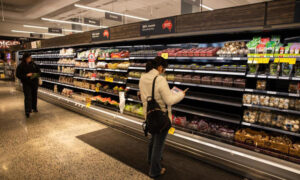OCTOBER 26, 2022

It’s rare that economic figures can put a federal budget in the shade in just one day, but the September quarter inflation figures came close. The annual rise of the Consumer Price Index of 7.3% was the fastest since June 1990 and suggests the Reserve Bank shall keep increasing rates even if a large driver of prices comes from overseas.
It really does deserve noting how unusual is this latest spurt of inflation. From 1970 to 1990 there were just five quarters where inflation was growing below 5%. Then after the 1990s recession, when inflation targeting became the order of the day, things flipped.
For example, from the introduction of the GST until the December quarter of last year, there was not one time when inflation was rising above 5%. Fast forward to now and we have had three quarters in a row of that happening and quite a few more set to follow:
Right now prices are rising like they haven’t since people were watching Pretty Woman in the cinema and listening to Madonna sing Vogue on the radio. So what is happening? Why are prices going mad even while the Reserve Bank is raising rates?
Well, a significant reason is that things happening overseas continue to drive higher prices – whether it be Russia’s invasion of Ukraine or the strong demand for goods in the US and supply-side issues that are caused by the combination of the two.
Usually, the prices of goods and services that have prices set in Australia (eg rents, education, electricity) rise faster than do the prices of goods and services which have prices set on the world markets (things like gas, petrol, coffee, furniture and cars).
But at the moment the prices of these “tradable” goods and services are rising much faster – up 8.7% in the past year compared to 6.5% for non-tradables:
That is a bit of a tricky one for the RBA because the oil price does not care one bit about Australian interest rates. The greater the impact these tradable items have on overall inflation, the greater the risk that the RBA’s rate rises will do little to slow inflation growth.
One things the RBA’s rate rises do affect is house prices, but so far we are not seeing much of an impact in the data. In the past year, the price of new-dwelling purchases by owner-occupiers (which is the CPI measure of house prices) rose 20.7%. The only item that rose faster was international holidays. But because the cost of a house is much greater than a holiday, the price rises of housing has a much greater impact on overall inflation.
In the past year house prices accounted for nearly a quarter of overall inflation growth. Take away house price increase and CPI grew just 5.5% – still a big number, but it does give some insight into what is going on.
Largely, the current inflation growth is driven by issues overseas beyond our control and dealing with the wildfire housing market that occurred due to the record low interest rates and the Morrison government’s homebuilder policy that sought to drive house prices during the pandemic.
That’s not to say you aren’t hurting if you are not buying a house. One of the cruellest aspects of this latest inflation spike is that it is largely occurring in non-discretionary items – the things you can’t avoid paying (eg, energy bills, food, transport costs).
In eight of the past nine quarters, the prices of these non-discretionary items have risen faster than have the prices for discretionary items – those things that you can leave off buying until another time.
Petrol prices of course are a big non-discretionary item for most people. And while prices have come down from where they were earlier in the year, they still remain on average about 40 cents a litre above where they were before the pandemic:
One of the big quandaries with inflation of late has been the lack of rises in the CPI figures for rents. This didn’t really align with what we were seeing with the prices of rents being advertised. One of the problems is that the ABS measures the cost of all rents, not just new ones.
This means it can take some time for rental price increases to flow through to the actual data. Well, we need wait no longer. In the September quarter rental prices rose more than 1% across all capital cities, the first since 2009 that has occurred:
Of course all of this becomes a major concern because of what is also happening with wages, which are lagging behind prices rises:
This is absolutely smashing people’s purchasing power. In the past year real wages have fallen 4.1%. In effect, that means you can only buy around 96% of the total amount of things you were able to buy a year ago with your wage.
Using the RBA’s estimate for wage growth of 2.85% over the 12 months to September, that mean real wages are now back to where they were at the end of 2010:
The worse news is that real wages are set to keep falling. Tuesday’s budget papers did not predict a turnaround until late next year.
Right now, people’s cost of living is rising, and their standard of living is falling. And because the cost of living rises are most sharp for essential items, that means the low-to-middle incomes earners are the ones doing it the most tough.










































































































